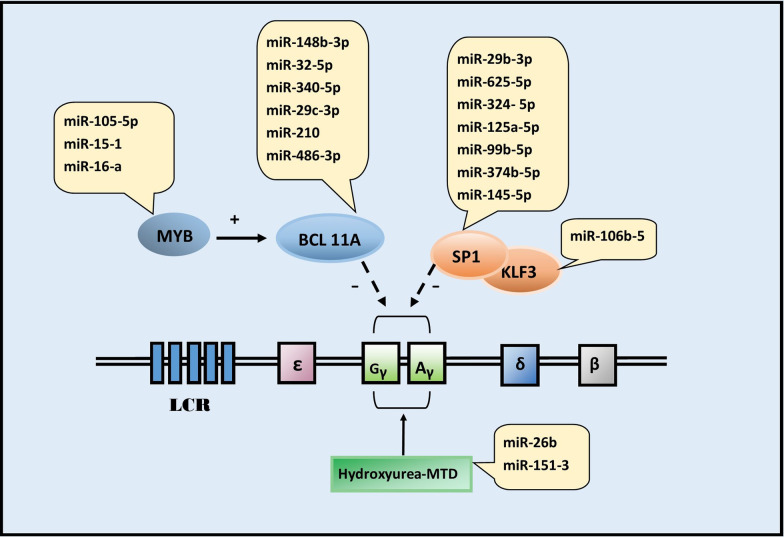Fig. 2.
MicroRNA pathways involved in fetal haemoglobin induction effect of hydroxyurea. Human β-globin cluster consists of a locus control region (LCR) and four function genes (ε,γ,δ and β). γ-Globin is active during fetal life and is suppressed in adults by the action of several transcription factors that include Specificity protein 1 (SP1), Krüppel-like factor 3 (KLF3), Myeloblastosis oncogene (MYB) and B-cell lymphoma/leukaemia 11A (BCL11A). Hydroxyurea alters the expression of several microRNAs (miR) which act on these molecular targets to induce fetal haemoglobin. miR-26b and miR-151–3 stimulate γ-globin at the maximum tolerated dose (MTD) of hydroxyurea

